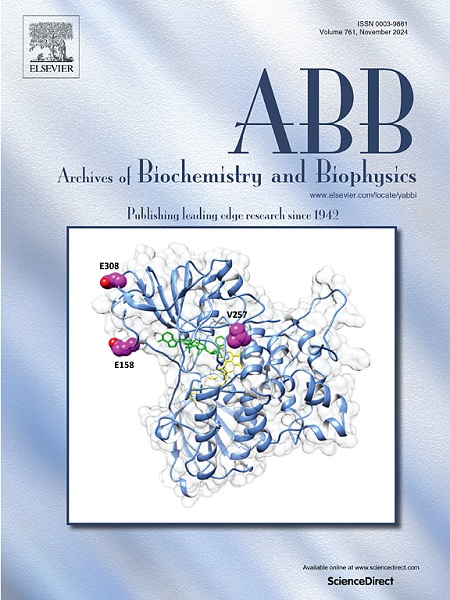Microcrystallization and room-temperature serial crystallography structure of human cytochrome P450 3A4
IF 3.8
3区 生物学
Q2 BIOCHEMISTRY & MOLECULAR BIOLOGY
引用次数: 0
Abstract
The cytochrome P450 family of enzymes are key players in the metabolism of foreign substances in the body, including pharmaceutical compounds, and therefore important to take into consideration during drug development. The main human isoform is CYP3A4, a highly flexible protein that can act on a diverse set of substances and that is inhibited by compounds varying greatly in size. To accompany the different ligands, substantial conformational changes occur that transform the active-site binding pocket between a collapsed form and various open states. A large body of biophysical data including high-resolution structures are available but there is still a lack of understanding of the dynamic properties of CYP3A4. Here, we present the first room-temperature structure of CYP3A4 solved by serial crystallography. The structure is overall very similar to structures solved at cryo-temperature of the un-bound form of the enzyme including the conformation of the active-site lid. We observe that loops are better defined at room-temperature despite the lower resolution of this structure. Based on an internal distance matrix analysis of a large set of CYP3A4 structures, we conclude that the crystal form rather than temperature is determining for how the structures cluster. Finally, a workflow for generating microcrystals suitable for fixed-target serial crystallography data collection is described. This work lays the foundation for future studies of ligand-induced dynamics and structural transitions during the catalytic reaction of CYP3A4.

人细胞色素P450 3A4的微晶化及室温序列晶体结构
细胞色素P450酶家族是体内包括药物化合物在内的外来物质代谢的关键参与者,因此在药物开发过程中需要考虑到这一点。主要的人类亚型是CYP3A4,这是一种高度灵活的蛋白质,可以作用于多种物质,并受到大小差异很大的化合物的抑制。伴随着不同的配体,发生了实质性的构象变化,将活性位点结合袋从折叠形式转变为各种开放状态。包括高分辨率结构在内的大量生物物理数据是可用的,但对CYP3A4的动态特性仍然缺乏了解。在这里,我们提出了第一个用连续晶体学解决的CYP3A4的室温结构。整体结构与酶的非结合形式在低温下解出的结构非常相似,包括活性位点盖的构象。我们观察到,尽管这种结构的分辨率较低,但在室温下环路的定义更好。基于对大量CYP3A4结构的内部距离矩阵分析,我们得出结论,晶体形式而不是温度决定了结构如何聚集。最后,介绍了一种适合于固定目标连续晶体学数据采集的微晶体生成流程。这项工作为进一步研究CYP3A4催化反应过程中配体诱导的动力学和结构转变奠定了基础。
本文章由计算机程序翻译,如有差异,请以英文原文为准。
求助全文
约1分钟内获得全文
求助全文
来源期刊

Archives of biochemistry and biophysics
生物-生化与分子生物学
CiteScore
7.40
自引率
0.00%
发文量
245
审稿时长
26 days
期刊介绍:
Archives of Biochemistry and Biophysics publishes quality original articles and reviews in the developing areas of biochemistry and biophysics.
Research Areas Include:
• Enzyme and protein structure, function, regulation. Folding, turnover, and post-translational processing
• Biological oxidations, free radical reactions, redox signaling, oxygenases, P450 reactions
• Signal transduction, receptors, membrane transport, intracellular signals. Cellular and integrated metabolism.
 求助内容:
求助内容: 应助结果提醒方式:
应助结果提醒方式:


